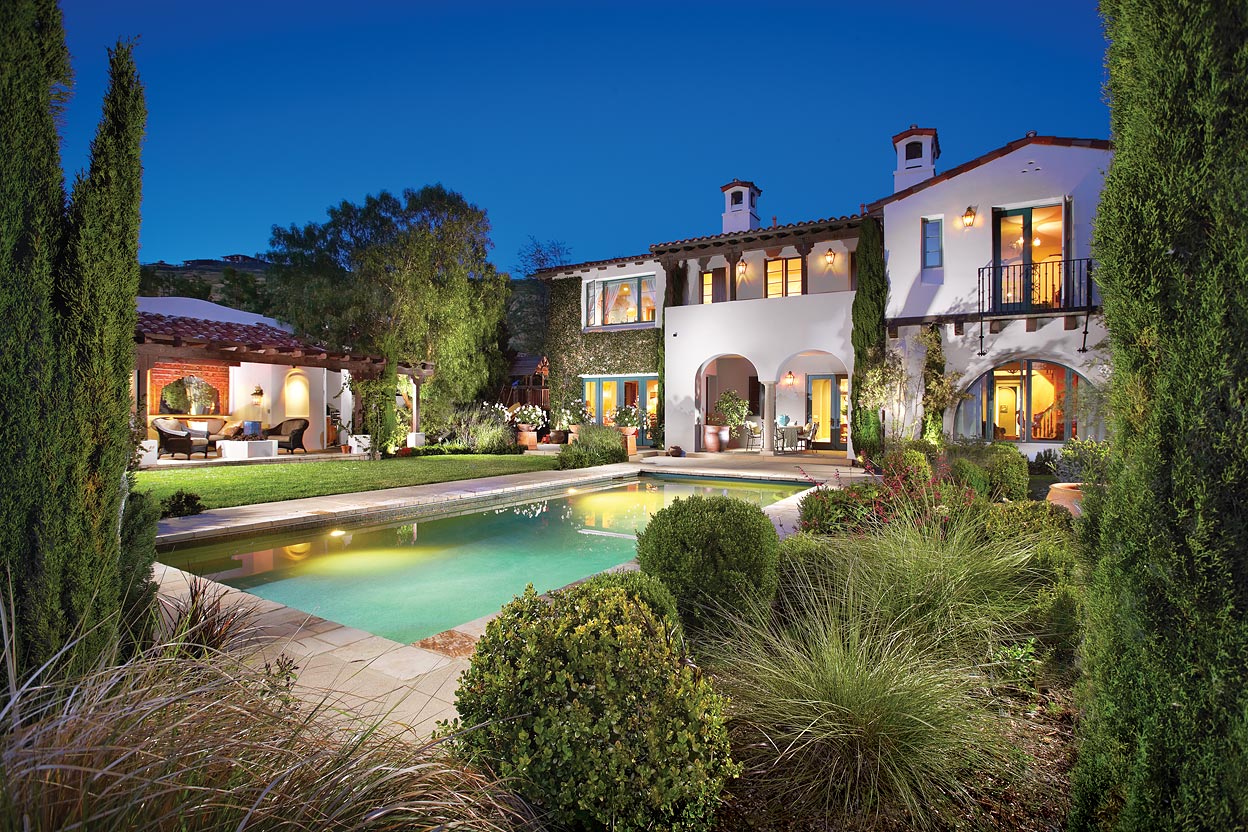Spring fever is in high pitch. Gardeners are working like busy bees creating explosions of colorful flowers and carpets of kelly green grass. But what if gardening is not your cup of tea or you just weren’t born with a green thumb? People who are gardeners are horrified to hear that there are a lot of people who don’t like gardening or anything to do with the yard. There are also a fair number of you that don’t have the time to spend tenderly caring for lush tropical flora, researching just the right mixture of soils and fertilizers, and leisurely spending your weekends in the garden department of the closest do-it-yourself warehouse store. Maybe you have a cat? We don’t have to say another word to you; cats can’t seem to resist soft potting soil. Are you destined to have barren and brown flowerbeds and skinny scrawny plants struggling to survive in your beautiful cantera planters? No, not so. We say you don’t have to look at dirt any longer, because we’ve discovered the beauty and practicality of fake plants. Embrace them, free up your time, and enjoy the atmosphere they bring to your indoor and outdoor landscape.
Sometimes, artificial plants are simply preferable. For example, artificial plants will remain unaffected by splashes of chlorinated water from a pool. For homes homeowners who travel frequently, artificial plants are ideal. When it comes to planning your own landscape design, numerous artificial plants are a possibility.
We will start by dispelling a common myth about these fake beauties. First of all, let’s not call them fake plants, let’s call them what all the little old ladies from the East Coast call them: permanent arrangements! You’ll have to practice the pronunciation as well: “Puh-muh-nint Uh-range-mints.” These ladies have sworn by them for decades and, in fact, never liked it when relatives brought real live potted plants, poinsettias, mums, and such. They wouldn’t know how to keep them alive any more than their poodles would. Their standards were very high though. They never bought plastic, only the best flowers made from delicate silk.
There were some problems with the silk. It was very fragile, it faded quickly, and it collected dust. Silk flowers were imported from Italy and France and were very expensive. Cleaning them often resulted in frayed or torn material, and the silk blooms had to be replaced every few months. Today, we see a completely changed and improved industry.
Today, high grade artificial flowers look and feel more real than ever before. They are made from blends of complex chemical composites like polyurethane, latex, Poly-chloride vinyl (PVC) and more advanced polymers. The parts are shaped using molds sculpted from real plants and flowers. These materials give an elasticity that is similar to a real plant. They are given real-touch coatings to mimic the feel of a live plant. Layers of color are applied to achieve a high level of realism. Perfumes can be infused into flowers, UV protectants and fire retardants are added to the fabric to guard against fading, and even dust repellents are woven in. These new technological changes can give us the confidence to choose permanent arrangements over real plants.
Today’s falsies are high-end fake plants. Even when you’re standing inches away from them, you have no idea that they’re not real. But, unlike real plants, you don’t have to do anything to maintain their beauty. We’ve given you many reasons to try them, but here are a few more: no watering, no weeding, no dying plants, no plant diseases or pests, and no maintenance.
If you’re interested in sprucing up your home or yard with faux plants, follow these tips. First, shop for the very best you can buy. If it looks bad in the store, it’s going to look worse in natural daylight. It is rumored that the French still make the world’s best fake plants and if you can afford them, buy them. Trousselier is a world-renowned French faux floral design house. They have a website, but unfortunately they don’t have an online shop. If heading to France isn’t in your future, check out local craft stores and be very picky about what makes it into your cart. Your investment will be worth it, in terms of durability and realism, and your plants will last for up to 10 years.
Only display plants and flowers that are appropriate for the season. If a fern wouldn’t be growing outdoors in January, don’t have a fake fern outdoors in January. Store it in a garbage bag in your garage, and put it back out in the spring. You’ll find yourself looking forward to the change of seasons because you’ll be able to change your plants with ease. Neighbors are going to be green with envy as your blooming spring azaleas switch to summer bougainvillea overnight.
Make doubly sure that you only buy fake versions of plants that grow in our region. This means for the Rio Grande Valley, you should be hunting for bougainvillea, oleander, lavender, zinnia, lantana, larkspur, sunflowers, firebush, cosmos, and hibiscus to name a few. There are multitudes of plants that grow in our area, and a quick search on Google will give you a wide range of plants to choose from. Your plantings will look less artificial and more coherent.
Use the same sense of proportion you would use in placing living plants. On a small terrace, for example, consider tall plants such as ficus or palms, which allow maximum display while saving valuable floor space. Add other potted plants in corners. The most successful designs feature a few medium-to-large plants rather than lots of small ones. If you have room for a hanging basket, consider greenery. A tall porch roof naturally lends itself to hanging baskets of ferns or trailing vines. You will want your landscape to look as natural as possible so don’t forget to pay attention to the details. Realistic imperfections are desirable. Not every leaf on a plant is the exact same shade of green, and sometimes a leaf or two may hint of brown. Nature isn’t perfect, and neither should your fake plants be.
Don’t forget the trees. Artificial trees can be used in designs to create focal points, as well as to block noise or direct foot traffic. For example, a row of artificial trees can help hide a neighbor’s unsightly yard or disguise a less than aesthetic fence. Artificial plants may also be used in conjunction with live plants to “fill” in empty spaces or replace dead or diseased growth.
“Plant” your artificial plants in gravel with fake moss or fake grass as ground cover. Weeds won’t be as likely to grow in rocks and the weight of the gravel will help anchor the plants when the wind picks up.
Although artificial plants do not require the maintenance and care of live plants, some basic care is required to extend their life. Simply hose down outdoor plants. A surefire way to clean up your indoor plants is simply to put them in a bag with some rock salt and shake. The salt will clean any dust and your plants will look refreshed.
Our homes, offices, and outdoor living spaces all benefit from the addition of eye pleasing arrangements of color and greenery, so don’t hesitate to start planting with artificial plants. Happy spring gardening!


